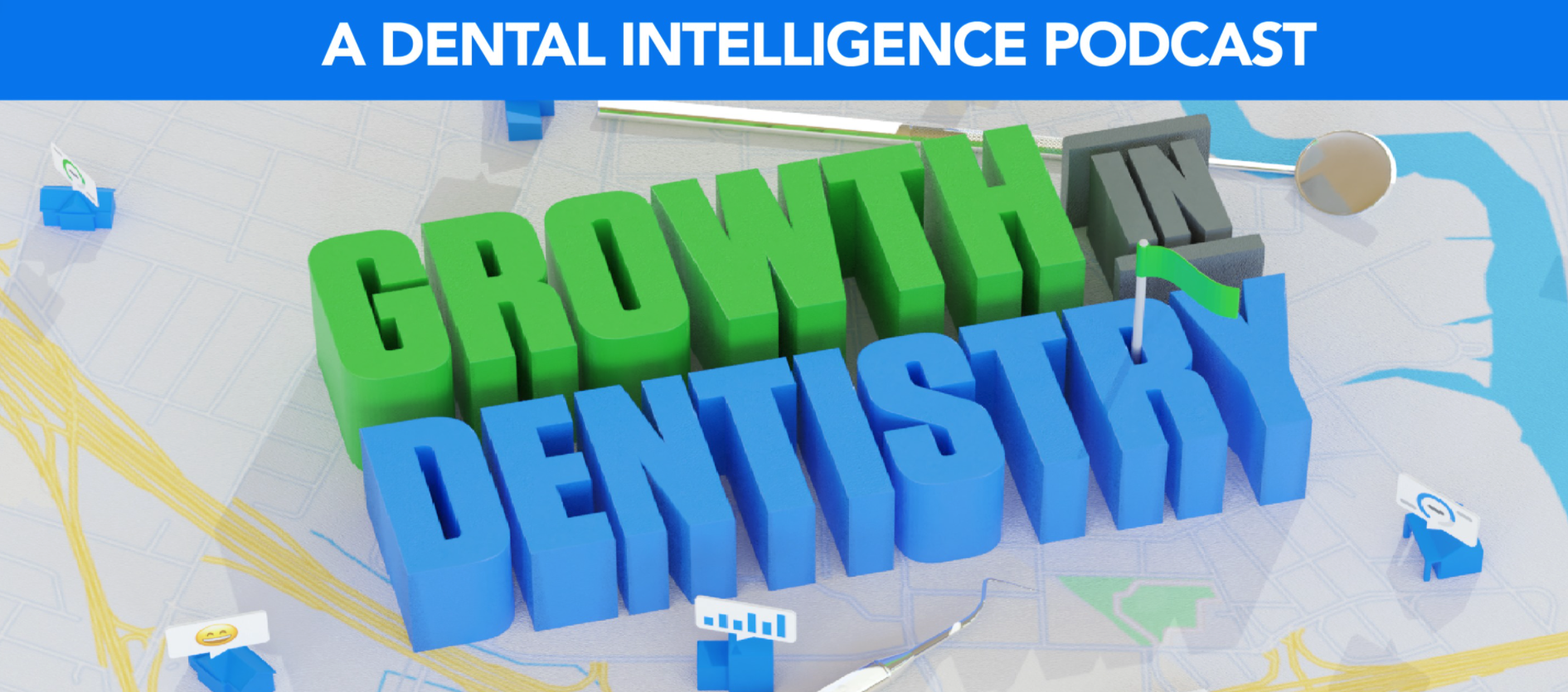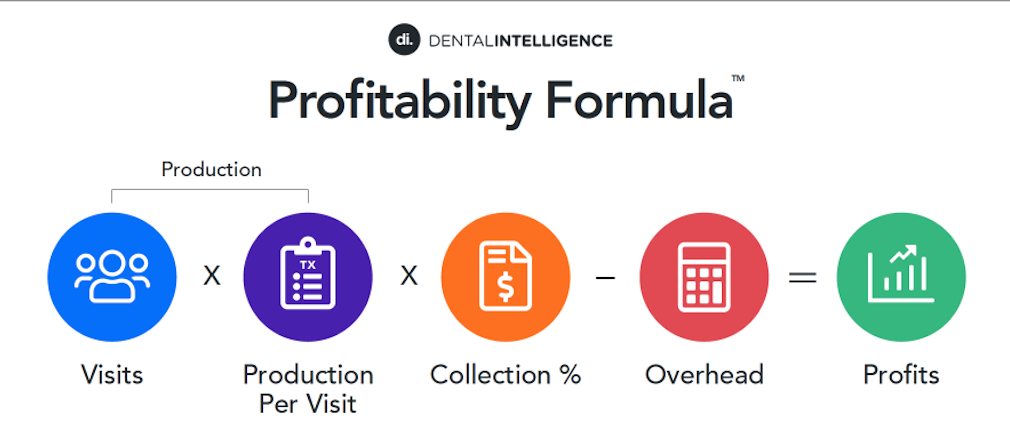Introducing Growth in Dentistry from Dental Intelligence

Every company has an origin story, and Dental Intelligence is no exception. From the beginning, DI has had a simple mission: Help dental practices to grow. Growth is what we were founded on, and it continues to drive everything we do.
In conversation with podcast host Katie Poulsen, Weston Lunsford, Dental Intelligence founder and former CEO, shares the story of how Dental Intelligence got started and how the company continues to focus on growth.
Weston
Part of our mission statement here is that we truly believe that all people want to experience real growth and meaningful growth and that we have the tools and resources necessary to enable that.
If we go back to 2004, I started a CPA practice and saw a huge gap of meaningful information that dental practices just did not have access to. A lot of practices were struggling to figure out why they had high production months. I had a conversation with a doctor who told me they had their best month ever and I asked him why that was and what do you think I heard from them?
Total silence! They didn’t know. And that wasn’t unusual. We couldn’t find anyone in the dental industry that was offering this ability to see and understand what was happening in a dental practice. We felt like they needed to know what was and what wasn’t working, and that’s what got us started on this amazing, crazy journey.
Simple Business Principles
It really came down to some simple business principles. We started evaluating the business of dentistry — taking the healthcare aspect out of it and looking at the business side — and of course, I know that healthcare is critically important — I’m not trying to reduce that. But if you evaluate dentistry like a business, then as in all businesses there are only two ways to increase growth (or production). You either get more buyers, or you get the buyers that are buying to buy more — those are the two options.

So, we started evaluating the industry. We started seeing a lot of leading indicators that balance those two categories that practices were blind to. I remember one of my first meetings with a doctor and asking him how many visits they see on average in a month — he couldn't rattle off that number and that’s an important leading metric. Are we missing our production number because we don't have enough patients in the chair? Or do we not know where we need to be at all?
Closing the Gap
After discovering this gap and seeing how widespread these issues were, we had a purpose and set out to solve these problems. At first, I was focused on helping the analysts at my CPA firm to solve them but then it started shifting when we began seeing HUGE movements in practices. We started seeing 100% increases in year-over-year growth and an average of 50% growth with the help of our analysts.
Then we got to a point where these doctors were getting crazy smart with the data that we were giving them and asking us — How can I just get the data? I just want the data and analytics and tools and insight, but I don't feel like I need consulting anymore. That was the beginning point for Dental Intelligence. We became all about equipping practices with the information they need to make really smart decisions and create really meaningful growth.

Here’s an important principle I want to emphasize:
If a practice is doing more dentistry, more healthcare is getting done. The two go together. You cannot provide more healthcare without more production.
So, it’s a win-win for patients and doctors alike. In fact, when I talk to team members about improving performance in a practice for a business purpose, I always tie it back to saying that if you're increasing by this percentage on average for your practice that means you're seeing X more patients, and that means obviously that more patients are receiving the treatment they need.
Katie
I love that you mentioned this, because I know sometimes when we start talking about “business” with dentists a red flag goes up in their mind. They worry about being perceived as selfish or too focused on making money.
As a hygienist, this was key for me to buy in to what DI was all about. The data that we offer allows people to see where they’ve been lacking in the diagnosing or the treatment of a patient. That’s a powerful thing to see, and it’s what I really love most about DI.
Growth in Dentistry
Our podcast, as the name itself communicates, is focused on dental practice growth. But that growth looks different for each practice and to each person working in the practice. For someone it might look like more money, for another it might be more family time, and for someone else it might mean expanding to multiple locations and for some people it might just look like getting back into their community.
What does growth in dentistry look like to you?
This is the question that will end each of our podcasts, and Weston gets to be the first one to answer it.
Weston
I do like how you say it’s different for everyone. It really is. In fact, I was recently speaking at a boutique event put on by Benco and I had a doctor there raise her hand and she asked “What if I don’t want to grow anymore?” I asked what she meant and she said “I don’t want to see any more patients than I’m seeing now. I don’t want to expand operatories. I don’t want to open another office.” And I said “Okay, where do you want to grow?” For her it was about quality of life and time away from work, which is fantastic.

I met a Dr. Johnson back east in Boston who called me up and he thanked me for what we were able to do for him and his practice. He was an MBA and a brilliant doctor doing very, very well as a single associate practice, meaning he was the only producing doctor and he had a team of 4 hygienists and he was doing almost four million dollars in topline production. He was a GP (general practitioner) - he did some ortho, but mostly general dentistry. He was doing crazy good, but he worked an additional 20 hours every week outside of the chair just to do the business side.
He called me up and said, “I just want to thank you - you saved my marriage.”
I asked him what he meant by that, and he said “Well, you gave me back 20 hours every week to be with my family because you are able to get me all the information I need at my fingertips.” To him, giving time back to his family was how he measured growth.
Katie
That’s super-powerful. It’s this kind of experience that inspired me to ask this question of each of our guests. My father was a dentist. He said he worked Monday through Friday, but he never worked in the mouth on Fridays because that was the day he was working on the business and then, when he finally came home, I saw what it meant to be a dentist. He’d work all day honing his skills and learning it. It wasn't an 8 to 5 job for him.
Weston
It never is, especially for practice owners. And again, I just want to reiterate — it doesn’t matter if you use DI or any other analytics tool for your business. You have to answer the question — What do I want to get out of the information? What do I want to shape for my future and my team’s future?
But here’s action we want to empower — We see a lot of data and here’s the simple answer to your question - real growth means seeing an overall increase in patients receiving the care they need to get or stay healthy. There’s a lot of data behind that answer, but that’s what I want to see. So, to me, elevating oral healthcare, at least here in the United States where we serve right now, is something our whole team is passionate about. And not just more dentistry, but better dentistry.
Let me give you an example. On average this last quarter, 62% of all restorative treatment that was diagnosed didn’t get accepted. That means it isn’t scheduled. Some of it will trickle in, but you’ll typically see over 54% of restorative care diagnosed NOT get completed over a 12-month period. That’s a problem. And I really feel like a big part of that is not knowing these numbers. We don’t know this information — we don’t see it. And every doctor and hygienist I talk to are all very passionate about improving oral healthcare. In fact, if hygienists could measure the pocket depth they reduced by footage over the years they’ve been practicing hygiene, that would be incredible!
Using Data to Change Lives
Weston
Something we say often at DI is that we’re changing lives. That’s a bold thing to say, but when you talk to our customers and partners, it’s what they tell us again and again: Our solutions and team members are changing lives.
When I talk to doctors, they all want to improve their case acceptance rate, but they don’t necessarily understand why it’s low, or where it’s low. It might be low because of the handoff, or what we’re saying inside the chair when the doctor leaves the practice. Or it might be low because the doctor needs to improve on some presentation skills, or it might be low because we don’t have good visual aids for patients when it comes to things they can feel but can’t see.

So, there are different ways to measure growth, and data can help people get smart about it. That’s one element. The other thing that I see right now in the industry as a part of improving oral health care is the percentage of our active patients that are unscheduled — It's insane. I know you know these numbers, Katie, but we have over 50% of our active patients (patients that have been in in the last 18 months) that aren’t scheduled, and then when we look at the number of inactive patients that are in our database, we have over 130 million in the database, and out of those 130 million 62% of them, as of right now, do not have a future appointment.
There’s a huge opportunity out there. And so, I really want to use information and data to get that proper information into team members’ hands in these practices so that they can do what they’re most passionate about - enabling more and better dentistry.
Katie
Thank you, Weston! This is a great beginning to our Growth in Dentistry podcast. Please visit your favorite podcast provider and subscribe so you won’t miss a single episode. And also, be sure and share the show with your community — we’re all in this together!





